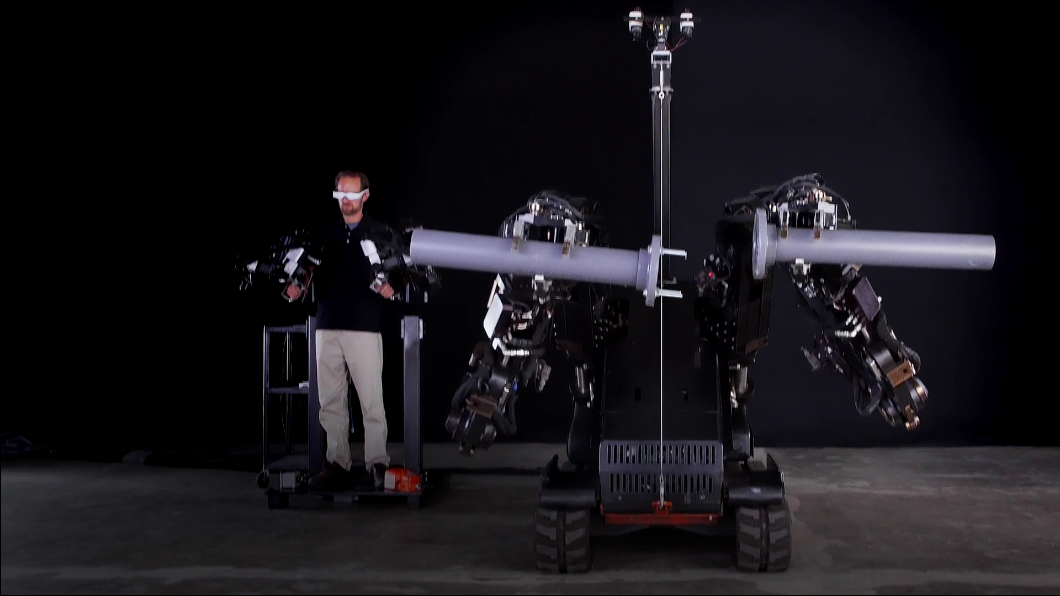By Warren Miller, contributing writer
Over the years, Hollywood has produced many sci-fi films about giant robots that are controlled remotely by their human operators (“Robot Jox,” “Pacific Rim,” et al.). Now, the robotics company Sarcos has developed a new robot, the Guardian GT, which makes those fictional futures seem like present-day reality.
The Guardian GT has two 7-foot long mechanical arms, each capable of carrying up to 500 pounds of material, as well as a video camera mounted on top of the machine that sends a video feed to the operator’s headset. As the operator moves his or her arms, the Guardian GT’s arms mimic that movement, making the operator feel as if he or she is the robot. “The distance between those stereo cameras and the shoulder is the same ratio as you have in your own human body,” Sarcos CEO Ben Wolff told Wired. “So it’s very intuitive. That kinematic equivalent concept enables a brand new operator with no training at all to be able to get into the machine.”

As the operator moves his or her arms, the Guardian GT’s arms mimic that movement, making the operator feel as if he or she is the robot. Image source: Sarcos.
The Guardian GT isn’t just powerful, it’s also dexterous. The operator can push buttons or turn doorknobs using the mechanical fingers on the end of each arm, meaning the Guardian GT can be used for smaller, delicate tasks as well as larger, more robust ones. In fact, the Guardian GT’s fingers are able to grip and use off-the-shelf power tools to perform cutting, grinding and finishing, plasma cutting, cleaning, and joining.
The technology that goes into the Guardian GT is as impressive as its capabilities. The robot’s arms are constructed to mimic the ways in which a human operator’s arms move. This makes controlling the robot very intuitive. You just move as you normally would and the robot’s arms follow in the same direction, with the same speed, and at the same time. The arms even have an element of feeling by using a high-fidelity force reflection technique, so the operator can feel a scaled-down force experience by the robot arm. If you wondered how the robot is powered, it uses batteries, and diesel fuel or propane as the energy source, allowing you to pick the energy source appropriate for the mission. The Guardian GT’s level of autonomy makes it suitable for performing tasks otherwise dangerous to humans, like disposing of toxic or nuclear waste.
Operator-controlled robots seem like a good step toward more automated or intelligent robots. Perhaps the operators’ skills, the approach to specific tasks, the response to unanticipated events, and, well, just plain skill will be captured and logged by the robot’s controller. These logs of activity could be the source of deep data that future generations of robots can use to learn how to operate autonomously, perhaps when operator communications fails or has too long a time lag.
Sarcos believes that the Guardian GT could one day revolutionize heavy industry by conjoining human brain power and dexterity with mechanical power and durability. Instead of replacing human beings by automating their responsibilities, the Guardian GT is a tool to help make people’s jobs safer and more effective. The element of human control makes the idea of a giant, self-contained robot capable of lifting up to 1,000 pounds a lot less scary — as long as there’s someone at the helm, we don’t have to worry about the robots rising up against us.
Advertisement
Learn more about Electronic Products Magazine





